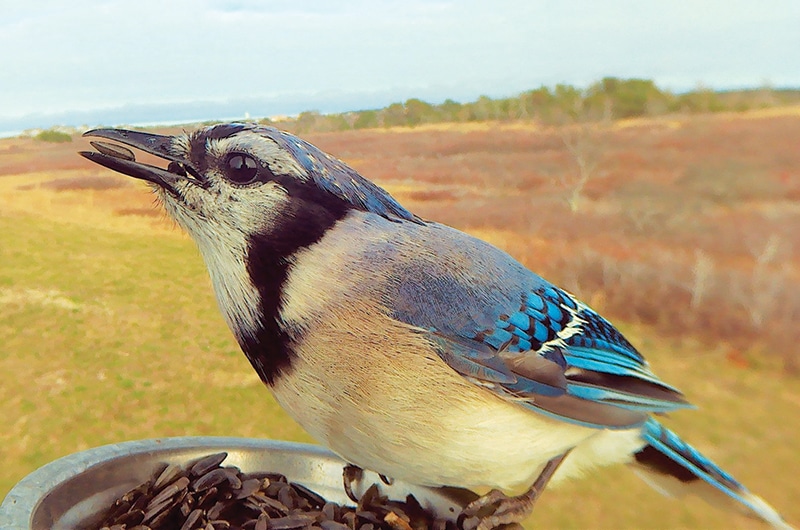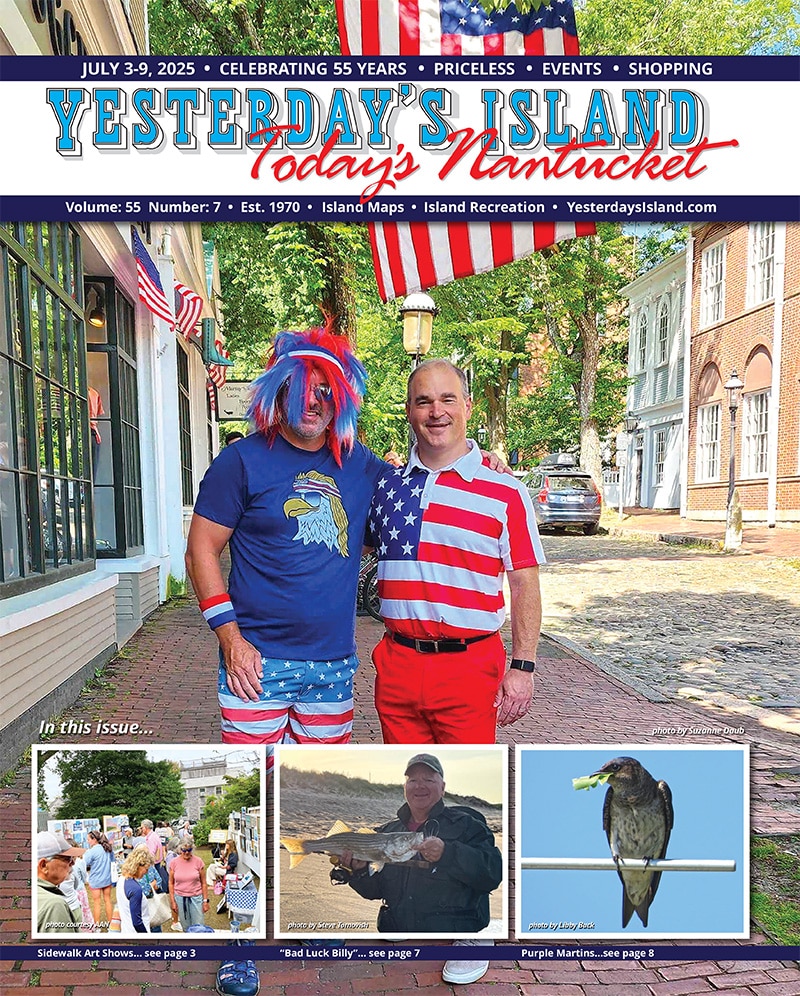Dr. Sarah Treanor Bois
Director of Research & Education at the Linda Loring Nature Foundation
This May, as the seasonal stores and restaurants open up again, people will start to migrate back to our little island bringing a new energy from afar. The same holds true for many of our feathered friends. May can bring a slew of visiting migrants stopping by Nantucket for a bit of food and rest before heading farther north. Other birds are coming back for the breeding season getting ready to find a mate and build a nest.

In order to attract such birds, people are filling a variety of feeders with sunflower seeds, suet, even orange slices. Hummingbird feeders are also being prepped with great hope. However, there are other ways to attract our avian visitors, like creating a wildlife habitat in your own yard.
First, why would you want your yard to be a wildlife habitat? Birds add color, melodious tunes, and many eat insects (including mosquitos and other pests). Some birds, like hummingbirds, are also pollinators and so provide a benefit to your landscape. Many people put up bird feeders of all sizes and varieties. However, those require daily maintenance and filling, never mind the added cost of seeds on Nantucket! In creating a wildlife habitat, we start thinking of our plants and landscape as the food supply for the birds. If done correctly, there may be no need to fill the feeders.
Whether you have a small slice of outdoor space or acreage to spare, anyone can create a wildlife habitat. How can you attract more birds to your yard, naturally? Start with paying attention to water, food, cover, reduce your use of chemicals and, last but not least, take a break from yardwork!
Water is often the main limiting factor for birds in many yards. Even on Nantucket, a small amount of fresh water can make a huge difference to bird activity in a yard. The late Nantucket ornithologist Edith Andrews used to hang an old plastic milk jug filled with water near her feeders. She poked a pin hole in the bottom (and at the top for air flow) and the water would just drip out slowly into a small collecting dish over the course of a day. This simple water feature was a huge boon for the birds.

Moving or dripping water also dissuades mosquitos from using the water bath as a nesting area. If you don’t want to get too fancy with drips, a traditional bird bath can be a nice feature. Just remember to clean it regularly! You don’t want your water feature to be a source for an avian disease (or a mosquito nesting ground).
As previously mentioned, you don’t have to put out bird seed to provide food. If you plant with wildlife in mind, select your landscape plants so that there are food plants available throughout the season. The birds will flock to your yard in addition to you having an extended growing season to enjoy. Early flowering plants are not only a welcome visual in the spring for us, they are one of the only sources of nectar and pollen for emerging insects and thus, food for our avian friends. Berry-producing shrubs are a must, but make sure to opt for native or at least non-invasive species like huckleberries, blueberries, arrowwood, cherries, etc. Ask at the local nursery or check out the Landscaping with Native Plants for Nantucket guide put out by the Nantucket Biodiversity Initiative (download at nantucketbiodiversity.org/ipsc).
Native plants support a higher diversity of caterpillars and other insects. These insects are prime food for birds as well. Caterpillars that make it to cocoon or chrysalis stage then emerge as butterflies and moths for your garden delight.
Other plants to consider are pollinator-attracting species like lavender, cardinal flower, and milkweeds. Sunflowers are not only good for pollinators, but the seeds can be a great food source in the fall for migratory birds bulking up for the long journey.
And by avoiding costly bird seed, you also avoid attracting other critters such as squirrels, mice, and rats!
Providing at least two sources of cover allows birds a spot to hide and feel safe. Sometimes we just need to get away from it all, right? Providing cover can sometimes be construed as “messy,” but is important to create a space for wildlife. A brush pile, dense shrub or thicket, meadow planting, cluster of evergreens, or rock pile are all great options for cover.
If we start by thinking of insects as part of the habitat and food for the birds, we start thinking of ways to increase native insect diversity.
Almost all insecticides are non-target, meaning that they kill everything. By spraying for one insect (like a wasp), you can also end up killing honeybees, native bumblebees, butterflies, and a host of other invertebrates. A lack of insects tends not to attract birds and other wildlife. With a sterile yard, there are no pollinators and your garden plants can suffer. When possible, handweed to avoid chemicals. Don’t use insecticides unless very targeted (like a wasp nest) or specific (ant traps, for example).
Finally, don’t clean up the yard…or at least don’t clean part of it. This is a great excuse to be lazy in your yard. Leaving leaf piles, sticks, and some other natural debris leaves refugia for insects and other invertebrates and shelter for some birds such as Carolina wrens. Debris piles also naturally decay, thus, adding to the organic matter of the soil. If your property borders a conservation area these ideas are especially important.
Wondering how to get started?
The Nature Conservancy and the Cornell Lab of Ornithology have lots of resources for how to turn your yard into a wildlife habitat. Formerly the Habitat Network, there are great articles on what to plant to attract certain bird species, how to rip up your lawn for pollinators, and how to encourage beneficial insects—you’ll this all at yardmap.org/learn.
The National Wildlife Federation will even certify your yard as a wildlife habitat if you meet their requirements.


